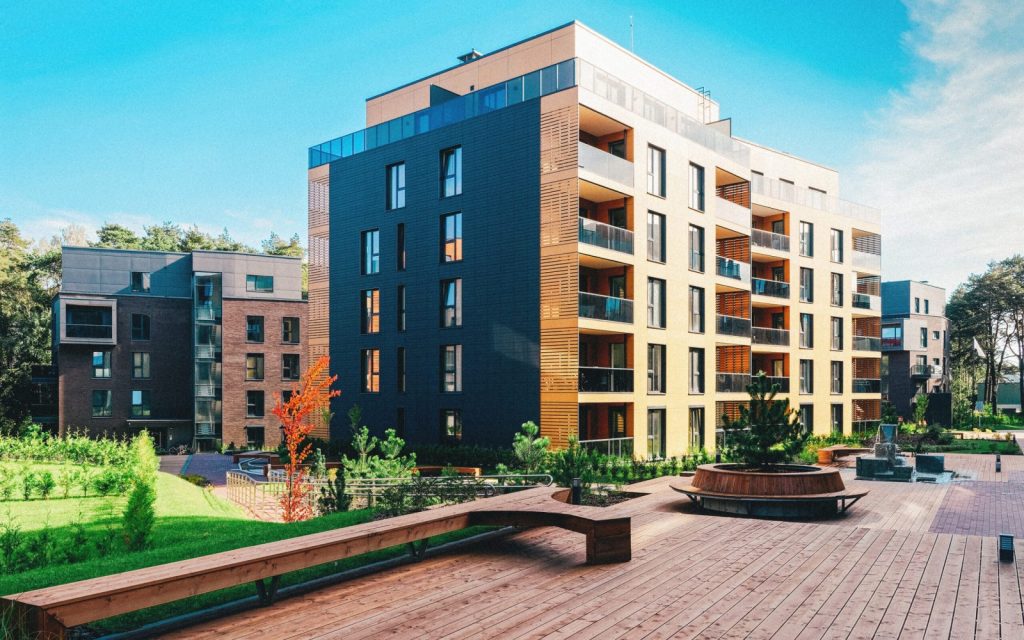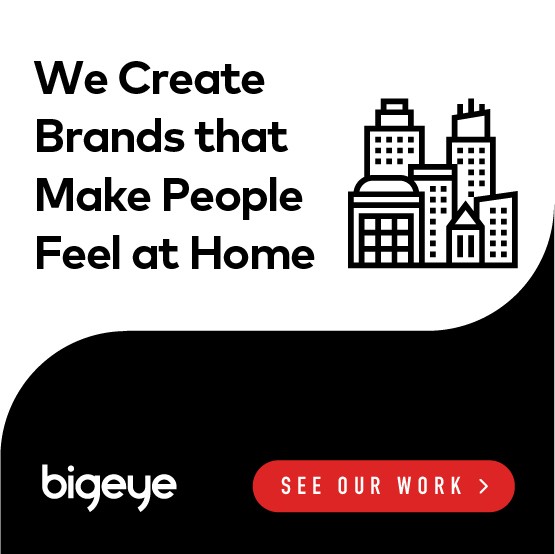
Property development marketing should begin with branding that provides a roadmap for decision making and a consistent branding message for renters.
When many property managers think about branding, an image of a logo generally pops into their heads. Branding includes logos and other graphics; however, that picture should mainly serve as a reminder of all of the other things that the brand message communicates. Ideally, property development marketing should create a logo that represents a brand — and not do it the other way around.
What does a multifamily marketing agency mean by branding?
To precisely define what marketers mean by a brand, it’s often helpful to contrast it with the definition of a logo:
- Logo: A logo refers to a visual image that represents a company. Some of the most recognizable logos in the US include Apple’s apple, McDonald’s yellow arches, and Twitter’s little bird. Without any other information, most people couldn’t guess what those logos represent, but they make sense in context. For instance, Apple’s apple may signify simplicity, and McDonald’s may promote their “golden” arches to symbolize quality. Obviously, Twitter’s little bird represents a “tweet.”
- Brand: In contrast to a logo, a brand includes everything people think about a company. They may remember the logo, but for a strong brand, consumers also may think about what the company offers and how they feel about their values, service, and quality. If Apple intends to promise simplicity, then the design of their devices needs to back that up.
Ideally, multifamily complexes or even portfolios of properties should develop a brand before they create a visual representation. Obviously, existing properties may already have an established logo. In this case, the multifamily marketing agency will need to decide if they should redesign their logo or simply work to get people to see it differently within the context of their newly defined brand identity.
Establishing a brand identity for apartment marketing
AM Digital highlighted some statistics that demonstrate the importance of focusing on branding as more than simply having a logo designed:
- Shared values: Out of all consumers, about two-thirds say that they would prefer to patronize businesses with shared values.
- Growth: About three out of four of all marketers believe businesses need strong brands to grow.
- Identity: About three-fourths of Millennials say they would abandon a brand if it failed to fit with their own identity.
Today’s apartment marketing tends to try to differentiate properties by promoting amenities, location, or in some cases, rent prices. Such positive features as a great location, pet-friendly policies, and high-tech security can factor into brand development. At the same time, features still don’t always add up to the way renters react to a solid brand.
For one thing, property development marketing may need to create a brand for multiple locations or at least, think that’s a possibility in the future. Every property might not have exactly the same locations or even amenities. Also, some properties could focus on different amenities because their target market in some areas may care about some things more than others.
Listing amenities and features can help with the logical decision-making process; however, the brand helps create an emotional relationship that can help differentiate the housing complex from others in the area.
Research Values and Behavior
No apartment marketer should ever assume they know exactly what potential or current renters want. Multifamily Executive said that researching the market frequently gets overlooked by apartment marketers. They suggest having a professional research firm conduct surveys and focus groups to ensure reliable information.
As an example, LMC chooses to brand each property individually, instead of trying to develop one brand identity for every complex. Before they even engage in property development, they hire research firms to make certain they understand renters in the community. In turn, they can use this information for marketing and to help develop their brand message.
Existing properties can take advantage of even more useful research. Instead of only surveying the general community, marketers can learn a lot from the on-site team. Employees work in the complex and probably live nearby. They can also ask for opinions from current residents to find out what they like or would prefer to change about the complex.
Develop a Brand Messaging Strategy
After figuring out the most important things that would draw a prospective renter and retain a current one, it’s important to craft a messaging strategy to communicate it. Most important, this message needs to differentiate the property from other choices in the community.
For some examples:
- Student housing marketing may focus on the benefits that student housing has over typical housing in the same area. Perhaps student apartments offer flexible leases, appropriate furnishings, study areas, and even an opportunity to socialize with other students. A multifamily brand for students may want to emphasize these features.
- A high-end apartment might want to focus upon the superior services that can help busy professionals save time over living in an average apartment or even owning a home. For doctors, lawyers, accountants, and other professionals, saving time may be more important than saving a few dollars on rent by moving down the street.
Create a Brand Identity to Reflect the Brand Message
At this point, multifamily marketers may want to develop logos or consider adjusting old ones. With apartments, it’s important to ensure that the graphics look as good and distinctive on business cards and brochures as they appear on large street signs. Naturally, the graphics, colors, and other elements used on logos and signs matter.
Still, apartment complexes also need to ensure that everything they do reflects their brand image. As a simple example, student housing will probably do fine with a relaxed dress code, so that kind of housing might let employees wear jeans and sporty T-shirts. On the other hand, a luxury apartment building might want to require at least business casual clothes for office staff and provide uniforms for maintenance workers.
Promote the Apartment Marketing Brand Strategy
Again, business cards, signs, and other vehicles to display the logo will provide part of the marketing. Beyond that, marketers should look into social media, paid ads, and even press releases to let people know why they’re different and of course, better than the competition. Promotions should still mention amenities and features, but they should incorporate those into their overall brand message.
Why focus upon multifamily branding
Mostly, defining a brand helps businesses ensure that customers have the intended reaction to all touchpoints. These encounters with the brand could range from street signs and paid ads to an online bill-paying system or prompt maintenance calls. The brand doesn’t just evoke a reaction from future or current renters but also provides a roadmap that multifamily property managers can base decisions upon.



